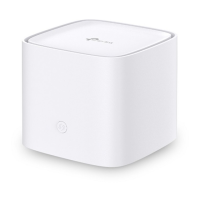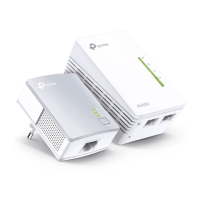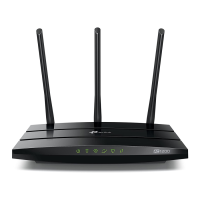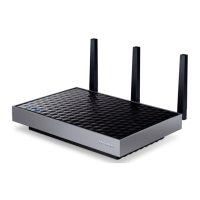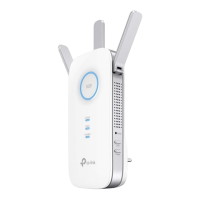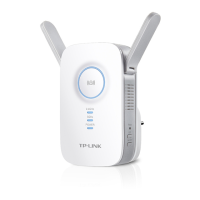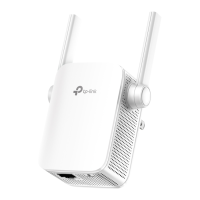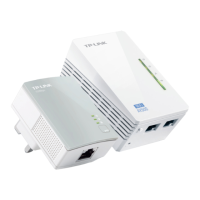Do you have a question about the TP-Link AX1500 and is the answer not in the manual?
Details on the extender's function, setup, and management via the TP-Link Tether App.
Visual guide to the extender's physical components including LEDs and buttons.
Instructions for plugging in the extender and waiting for the Power LED to turn solid.
Methods for connecting the extender to your network via app, web browser, or WPS.
Explanation of how TP-Link routers and extenders create a unified Wi-Fi network for seamless coverage.
Step-by-step guide to configure the extender for a OneMesh™ enabled network.
Guide to creating a TP-Link ID for cloud-based device management and service access.
Instructions for changing email address and password associated with your TP-Link ID.
How to add or remove user accounts for managing the extender.
Using the TP-Link Tether app for remote monitoring and management of the extender.
View the extender's connection status and troubleshoot network issues.
Set up or change wireless settings for extended networks, including SSIDs and security.
Modify the extender's IP address, subnet mask, and DNS settings.
Control the range of the Wi-Fi signal provided by the extender.
Permit or block specific devices from accessing the internet.
Optimize performance by disabling one wireless band for faster speeds.
Configure the extender's internal clock and daylight saving time settings.
Manage the extender's LED indicators, including scheduling them to turn off.
Define specific periods when the extender will be automatically turned off.
Update the extender's firmware for new features, performance improvements, or bug fixes.
Save current configuration and restore it later, or reset to factory defaults.
Modify the administrator password for accessing the extender's web management page.
View system logs for troubleshooting and diagnostic purposes.
Connect wired devices like game consoles or smart TVs to your wireless network.
Configure extender as Access Point and connect wireless devices via wired or WPS methods.
Details on the extender's function, setup, and management via the TP-Link Tether App.
Visual guide to the extender's physical components including LEDs and buttons.
Instructions for plugging in the extender and waiting for the Power LED to turn solid.
Methods for connecting the extender to your network via app, web browser, or WPS.
Explanation of how TP-Link routers and extenders create a unified Wi-Fi network for seamless coverage.
Step-by-step guide to configure the extender for a OneMesh™ enabled network.
Guide to creating a TP-Link ID for cloud-based device management and service access.
Instructions for changing email address and password associated with your TP-Link ID.
How to add or remove user accounts for managing the extender.
Using the TP-Link Tether app for remote monitoring and management of the extender.
View the extender's connection status and troubleshoot network issues.
Set up or change wireless settings for extended networks, including SSIDs and security.
Modify the extender's IP address, subnet mask, and DNS settings.
Control the range of the Wi-Fi signal provided by the extender.
Permit or block specific devices from accessing the internet.
Optimize performance by disabling one wireless band for faster speeds.
Configure the extender's internal clock and daylight saving time settings.
Manage the extender's LED indicators, including scheduling them to turn off.
Define specific periods when the extender will be automatically turned off.
Update the extender's firmware for new features, performance improvements, or bug fixes.
Save current configuration and restore it later, or reset to factory defaults.
Modify the administrator password for accessing the extender's web management page.
View system logs for troubleshooting and diagnostic purposes.
Connect wired devices like game consoles or smart TVs to your wireless network.
Configure extender as Access Point and connect wireless devices via wired or WPS methods.
| WiFi Encryption | WPA, WPA2, WPA3 |
|---|---|
| Wireless Standards | IEEE 802.11ax, IEEE 802.11ac, IEEE 802.11n, IEEE 802.11g, IEEE 802.11b |
| Ports | 1 x Gigabit Ethernet |
| Frequency Band | 2.4 GHz and 5 GHz |
| Maximum Speed | 1500 Mbps |
| Compatibility | Works with any WiFi router |
